Prepping can mean storing a couple of necessities to help you and your family cope during a blackout and other emergencies. The process also includes making sure that your family won’t be exposed to too many hazards.
If you’ve prepared everything except for a bunker, then this article is for you. It’ll help you understand everything you need to know about building one, including the different types of bunkers and the permits you need to secure before starting the process.
Quick Navigation
What Is A Bunker?
5 Reasons Why You Should Build A Bunker
How to Build A Bunker: The Steps
Types of Underground Bunker for Preppers
1. Custom Bunkers
2. Super Large Bunkers
3. Tube Survival Shelters
4. Container Shelter
5. Loew’s Concrete Storm Shelters
6. Atlas Survival Shelters
Why Do Survival Underground Bunkers Cost A Lot?
Why Do People Invest In A Backyard Bunker?
History of Underground Shelter
What Is A Prefabricated Bunker?
Key Takeaways
FAQs
|
What Is A Bunker?
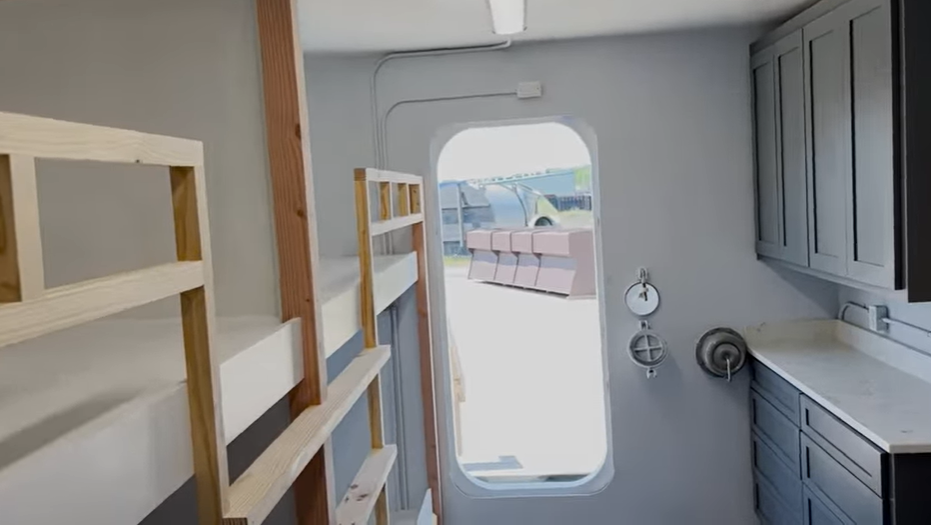
Atlas Survival SheltersBunker is a term used to describe a container or storage chamber onboard a ship storing the ship’s fuel. In preparing, though, a bunker is considered a defensive barrier or trench.
You can think of it as a fortified chamber underground. It’s typically made of reinforced concrete and has embrasures. It’s a secure, underground location designed with thick walls to withstand intense shooting, bombing, or SHTF occurrences.
5 Reasons Why You Should Build A Bunker
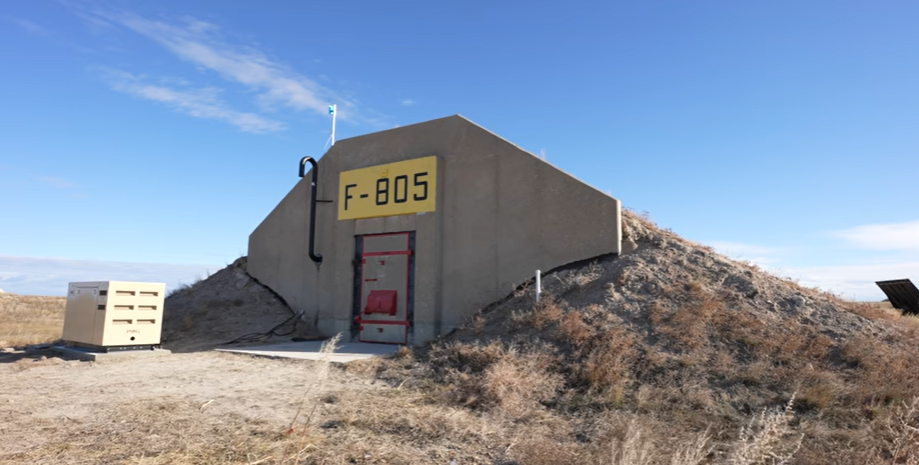
Enes YilmazerAll decisions that we make in life are anchored to some “whys”. As for building a bunker, most people would say that it can help them during challenging times. Even though building one is costly and requires a lot of time and effort, it’s still a “must” for most people. After all, safety should come first.
But why exactly do you need to build a bunker? Below are five of the most common reasons why:
- Natural Disaster
- Man-made Disasters
- Social Chaos
- Biological Warfare
- Electrical Grid Failure
How to Build A Bunker: The Steps
Now that you’re convinced that you need to build one, here’s a list of steps to guide you:
1. Process All the Required Permits
Do I still need a permit before building my bunker?
The answer is YES. You need to comply with specific permits before you start your construction. Make sure to check the requirements posted by your state or country. The types of permits might vary from one place to another.
Here are the most common permits you might encounter:
Digging Depth Permit
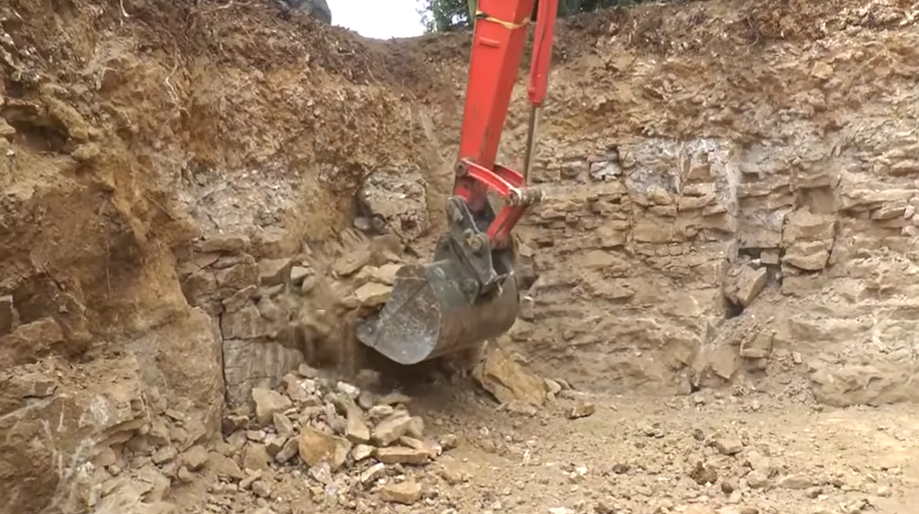
colinfurzeThis type of permit indicates how deep the place allows you to dig when geographic factors come to play. Digging beyond the recommended depth may lead to accidents and that is why this permit is essential. You cannot mess with electric and gas lines underground.
Grading Permit
You might need to get a grading permit. If your bunker project would modify the topography of your property, you will need to get this permission.
Some places may require grading permission initially since you will be excavating or filling. Some assessment will be needed on the property where you wish to build your bunker.
The study may look into the land’s environmental sensitivity and even the viability of your underground bunker. If everything checks out, you’ll be given permission, and if no more permits are required, you may get started.
Building Permit
Even though you’re building an underground bunker, it may still require a building permit. Specific locations require a local building permit. Remember that it is a construction project, and there are specific local laws you need to adhere to to ensure that the safety of the surroundings is still preserved.
Discretionary Permit
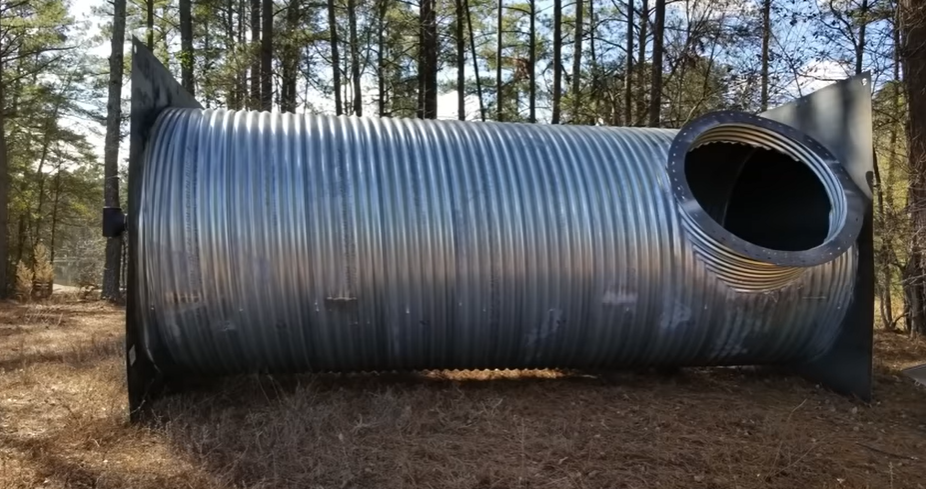
Going Full CircleIt is an uncommon type of permit. Discretionary permits are very beneficial if the bunker, especially its features, can significantly impact the area. However, if your local area is not finding one, you can start the project without this permit.
Plumbing Permit
Underground bunkers need plumbing systems. Because of this, it is necessary to comply with the plumbing standards imposed in your location.
Electrical Permit
Electricity is one of the necessities that will sustain you and your family during a fallout. You should set up electrical systems for your bunker that would be very beneficial for the future. Despite the fact that you can still use battery power, having electricity is more sustainable.
Before you process all the other permits for your underground bunker, consider getting an electrical permit first. Once your electrical plan is all set, then you can start with licenses to build your bunker.
Note that it’s vital to check the requirements of the authorities in your locality to avoid delays. When you do this, you can build your bunker more efficiently without disruptions before the bad
2. Choose A Feasible Location
After securing all your permits in place, the next step is to find a location. There are certain considerations you need to bear in mind:
- Avoid areas that are close to large bodies of water
- Do not build in flood hotspots
- Avoid flammable areas
- Do not choose trees and vegetation surrounding places
- Do not dig into any utility lines
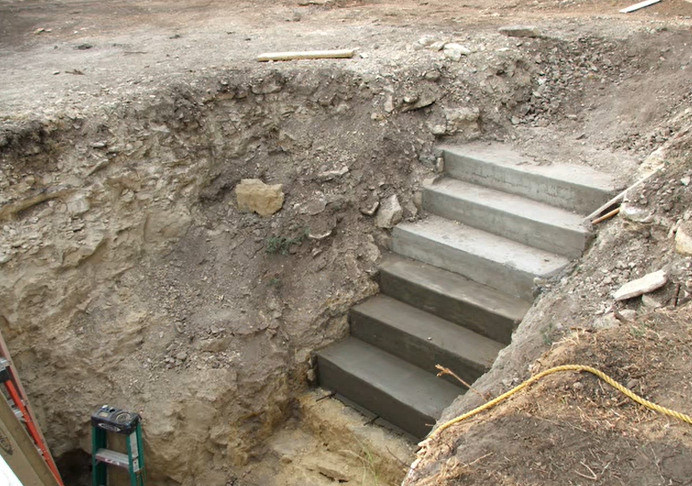
Wayne Martin3. Make A Blueprint
Your primary consideration in developing a blueprint for your underground bunker is security and safety. After finalizing your location, start measuring the area you are working with. You will get a glimpse of how to begin designing your blueprint.
Small spaces will not restrict you from achieving the bunker that you desire. However, having little space means that you need to make every corner of the bunker useful. Here are some tips for you to know how to maximize the area you currently have:
- Have an open area plan for you to combine spaces. Concrete divisions in your underground shelter can take up a lot of space. Make the are free-flowing so that you can still breathe and move around freely.
- For storage efficiency, you can use vertical space. You can install cabinets above your furniture or hang some floating shelves. Tall, slim, and standing items can save you enough space for more storage. Having a place to store your necessities is one of the essential features of a bunker.
- Try installing wall-mounted furniture. Search the web for inspiration on various wall-mounted furniture designs. You can attach your desk or table using a hinge so that you may flip it up when not in use. In this way, more space will be available for the family.
Avoid jampacking your small space with unnecessary furniture and items making it super claustrophobic. According to FEMA, five to ten square feet should be provided for every person inside a tornado or hurricane bunker. By following this recommendation, each staying inside the bunker will have their own private space.
4. Choose the Right Materials
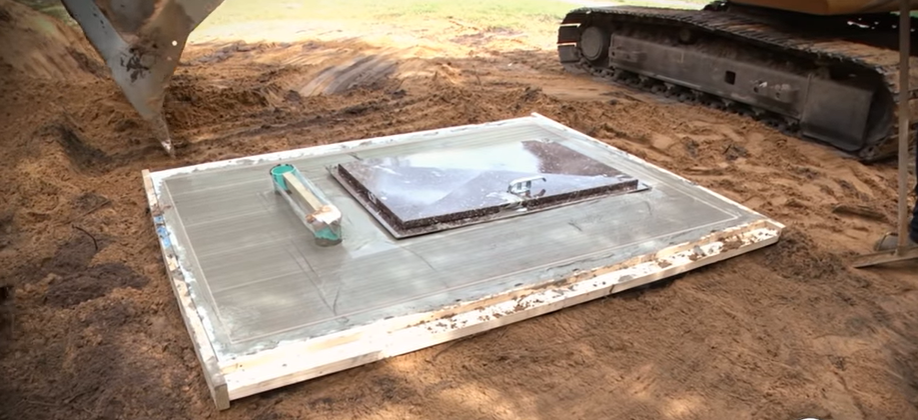
AK INDUSTRIES, INC.The materials you will use for your bunker will define its durability and sturdiness to withstand undesirable situations. There are standard materials that bunkers are usually made of.
Metal Sheeting is one of them. It is a water-resistant and durable material. However, it is expensive as well. When using this one, your space should have insulation. The next one is bricks. Bricks are also sturdy. Unlike metal sheeting, bricks are affordable and are the best insulators. It is weatherproof and it also allows you to color and style based on your preference.
The last one is concrete. Reinforced concrete can protect you from bullets. The advantage of this material is that it is cheap. Self-healing concrete reduces maintenance requirements and has a more than 200-year lifespan.
Note: Never consider using wood. Wood is prone to termites when not treated well. It can weather and rot since it has the capability to absorb moisture. It is acceptable to use this for your bunker decoration, however, make sure to keep it clean.
5. Choose the Correct Equipment
A shovel alone is not enough to dig your way in to start the construction; You need to have the right equipment for efficiency. Excavating equipment has the capability to dig down despite tight spaces. When you’re digging, you’ll need a trencher and an excavator since you want to be as precise as possible.
Main Uses for a Trencher:
- Pavement Cutting
- Drainage Creation
- Shoveling
- Utility line digging
- Roots cutting
When you want to use a trencher for your bunker, it is very beneficial in outlining the area when you want to build your bunker. After using the trencher to outline, utilize an excavator to dig a hole below the ground.
We recommend using a mini excavator to dig wholes in very constricted areas like your backyard.
6. Gather Key Living Necessities
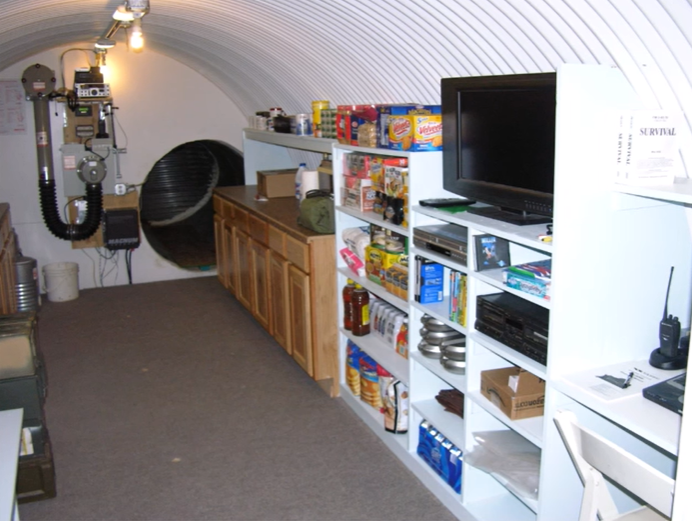
Blueprint Safe RoomsBuilding the bunker alone below the ground is not enough to sustain life. If you consider yourself a prepper, it should contain necessities and key living materials. This will allow you and your loved ones to have a life of comfort for an extended time.
Here are the top things your bunker should have:
- Ventilation and Air Filters
- Power Generator
- Water Filters
- Waste Removal System (composting toilet, wastewater pump, poop tube)
7. Begin Digging
Now that you will start to dig, the general rule goes this way: dig as much dirt, not more than 10 feet piled up above your bunker. This deep bunker can protect you from radiation, cave-in, and other dangers outside.
Do the “cut and cover method”. The first step in this method is to dig a trench. Before you break the ground, review OSHA’s digging safety recommendations. Remember that digging is one of the most dangerous jobs. To practice safety, install a protective system. Some of the most common protective systems are sloping, shoring, and installing a trench shield.
Remember to consider the depth of your bunker. You want to dig far enough to protect yourself from the weather, but not so much that you get trapped.
8. Reinforce Your Shelter
It would help if you fortified your shelter when building an underground bunker. No matter how deep you dig, you’ll have a lot of weight pressing down from the top due to soil, water, plants, and other outside stuff.
Before building your shelter to support your bunker, start by laying a good foundation. Concrete is one of the most excellent foundation materials, although it is prone to cracking and fracturing. For better outcomes, use reinforced or self-healing concrete.
To keep your bunker from collapsing, lay metal beams over the ditch. You may also build an extra layer of safety by using reinforced concrete.
Your bunker’s walls must also be 1-3 feet thick. If you’re going to use concrete, make sure the walls are sturdy and reinforced to provide additional protection against explosive shockwaves and radiation. Make sure you put a layer of brick or concrete inside if you’re utilizing metal sheets.
If left ignored, water damage can cause mold and cause structural damage. Use waterproof materials like rubberized asphalt or cementitious waterproof coating to coat your bunker and protective systems.
Consider using comparable reinforced technologies as earthquake-proof structures if you’re building in an earthquake-prone location. Seismic forces can be redistributed using shear walls, cross braces, and moment-resisting frames, safeguarding the bunker.
9. Prep and stock up on essentials
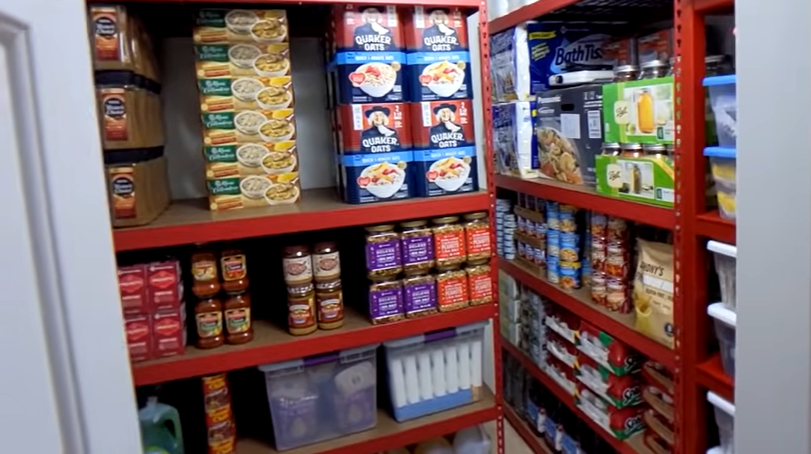
FunBubbleYou’ll be spending some time under your bunker during the initial incident, whether it’s a nuclear fallout or an apocalyptic scenario. FEMA recommends having at least two weeks’ worth of food and water per person as a basic minimum.
Whatever occurs, remember to follow the 7:10 rule of thumb for estimating radioactive danger. It indicates that there is a 10-fold increase in detonation for every 7-fold increase in time following detonation.
In general, after two hours of explosion, the radiation exposure rate is 400 roentgens (radioactive waves) per hour. The radioactive exposure rate is 1/10 of that after 14 hours.
Aside from the long shelf life or expiry date of a food, you should also consider it nutrional content. It is need that you should stock up on canned good, yet do not forget to have healthy options too. Here are some non-perishable healthy food you should buy:
- Canned or dried beans
- Dried fruits and veggies
- Dried meat
- Grains
- Protein bars
- Canned soup
- Dry eggs and milk
You should also have the following appliances:
- Portable butane stove
- Microwave
- Candles
- Alcohol
- Propane
Note: You should allocate each person inside the bunker a gallon of clean water per day of stay. To prevent irritation and boredom (cabin fever) think of some daily activities like reading a book or playing boardgames you can do while inside your own underground bunker.
Types of Underground Bunker for Preppers
For decades, building an underground shelter has been necessary for most preppers. The situation today further necessitates most of us to have one. Scientists say we only have a little time left as the world might crumble down due to changing climate systems.
The Bunkers of Today
When we say “doomsday bunkers,” many of us might imagine a concrete underground shelter or room filled with unperishable food like canned goods and water. The threat of another world war is more realistic to happen today than before.
Thus, people are now searching for alternatives to protect themselves and their families from risks and dangers. As a result, the demand for these underground shelters has skyrocketed in the past years until now.
Long gone are the days when people get content with mere shelter and food during SHTF moments. We admit that grandpa’s underground bunker was so metallic and uncomfortable. Today, most of them are searching for a shelter with high security that also offers luxury and comfort.
Doomsday shelters come in different types. They are based on the demand of a particular individual. Here are the five different types of underground bunkers that you may want to choose from:
1. Custom Bunkers
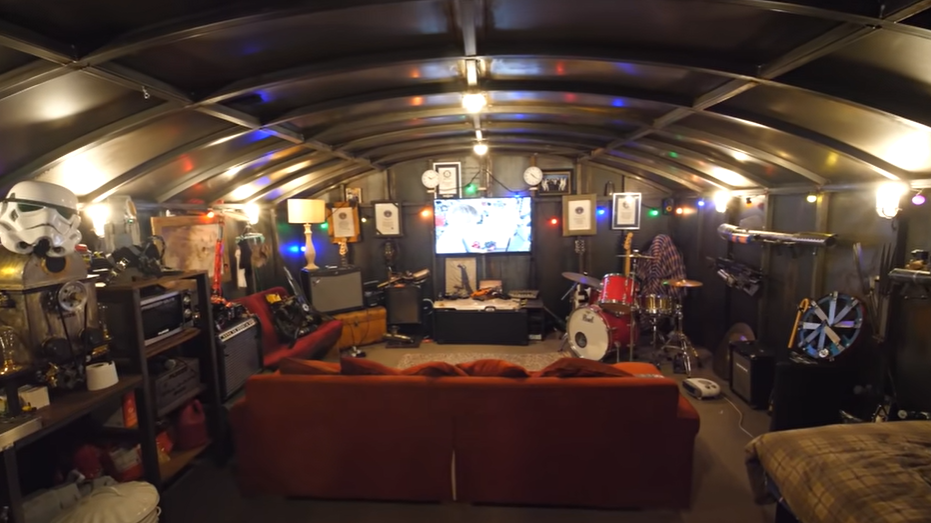
colinfurzePeople with a lot of money can go for this option. Usually, these types of underground bunkers is designed from the ground up based on specific requirements. You can even request to put various rooms and house features according to your liking.
A custom bunker from the ground up can set you back roughly $60,000. The expenses are very changeable because so much depends on local building prices. A storm shelter can cost anywhere from $2,565 to $10,240 on average. To obtain a reference, look up how much it would cost in your area.
When starting from scratch, keep the following expenditures in mind:
- Have your bunker designed by an architect.
- Obtain all required approvals from your local government.
- Concrete, metal, and bricks are examples of construction materials.
- Rental of excavation equipment.
- Filter and ventilation, power generators, water filters, and waste removal systems are examples of living materials.
- Costs of labor
- You’ll need supplies to last at least two weeks.
2. Super Large Bunkers
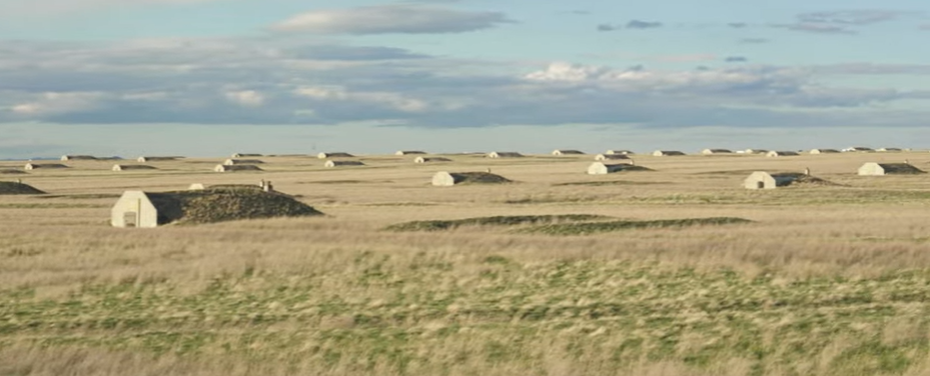
iWonderSuper more giant bunkers project a community setting. People who opt for these types of bunkers believe that this type of underground bunker can provide them with an experience closely similar to the real world. It promotes socialization and communication with others outside of your circle or family,
This community bunker can cost hundreds of millions due to its size. It has a lot of similarities with the military bunkers. The difference is that it has luxury features and amenities to provide for normal people.
It can protect life from nuclear wars and biological weapons. It also has a sustainable power supply and waste removal systems. Nevertheless, it aims to ensure its residents’ quality of life and safety.
However, this type of underground bunker is not feasible during pandemics. Moreover, if there is a scarcity of supplies, riots and conflicts can happen. Instead of having a safe space during the worst times, there are chances where the opposite can happen.
3. Tube Survival Shelters
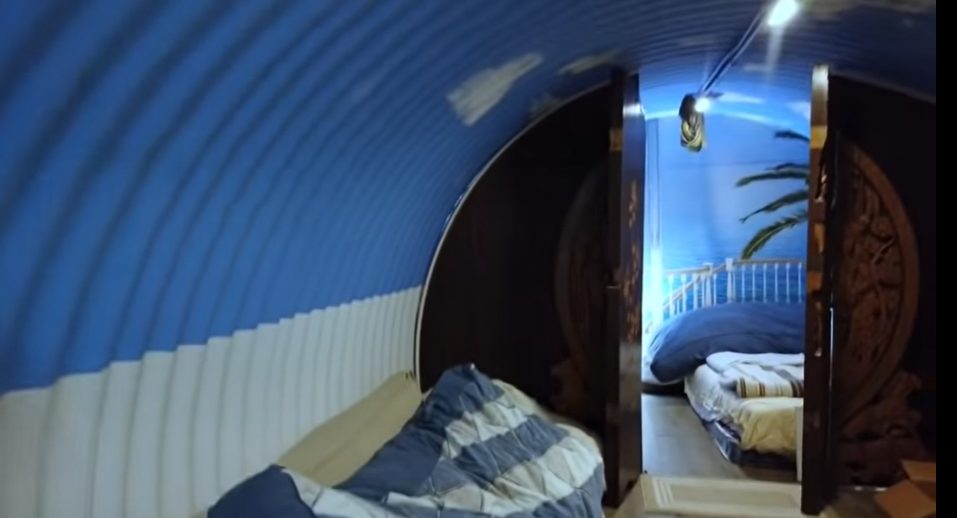
Going Full CircleExtremely opposite from the previous one, tube survival shelters are every economic-wise. Among all alternatives, it is the most affordable and cheapest. It also does not require a lot of reinforcement.
Tube bunkers can withstand a lot of pressure on the sides. It is very durable and can function for a lifetime lasting more than 200 years. Another good thing about this underground bunker is that it is very attainable. You can even build it in your home. You just need to ensure that it has reliable electricity and water supply.
An air filtration system and a backup generator should go with this type of bunker.
4. Container Shelter
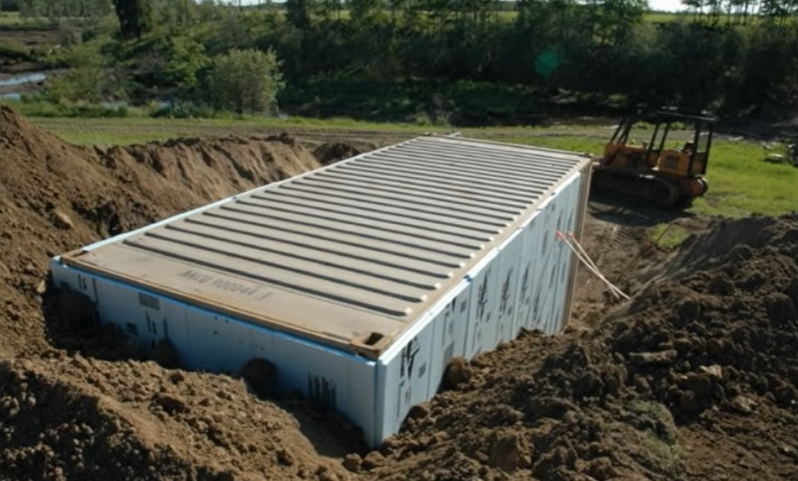
Prepper UniversityAnother simple underground bunker is a container shelter. The primary material for this shelter is a shipping container. To do this, you just need to find a reliable supplier of a shipping container in the market.
Since these shipping containers were built for a different purpose, they cannot withstand the excessive weight. Therefore, it needs reinforcement, especially when you decide to join a number of containers for a larger shelter.
5. Loew’s Concrete Storm Shelters
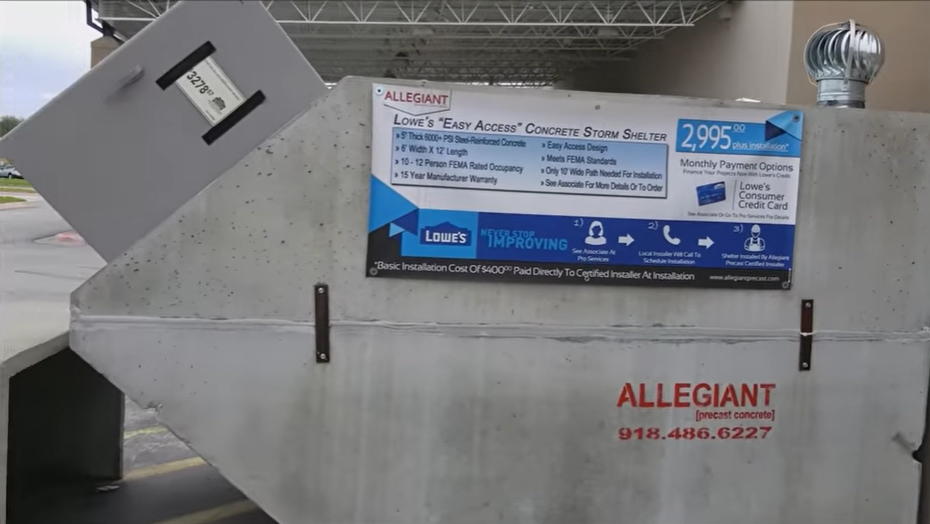
Keeping It DutchThis usually costs about three thousand hundred dollars plus the installation fee. It is one of the affordable options. We highly recommend this bunker for those living in areas that always experience massive disasters.
You can always see these underground bunkers in movies where a significant tornado or storm is present.
However, the downside of this bunker is its size. It is too small to encapsulate a lot of resources. It also gets cramped when more groups of people are staying inside. Moreover, people inside might feel difficulty breathing in the long run as there is not enough oxygen present. The waste disposal system of this underground bunker is not commendable.
Oftentimes, it comes with one space without partitions or rooms. We do not recommend this shelter for a group of people, especially spouses, since privacy here do not exist.
6. Atlas Survival Shelters
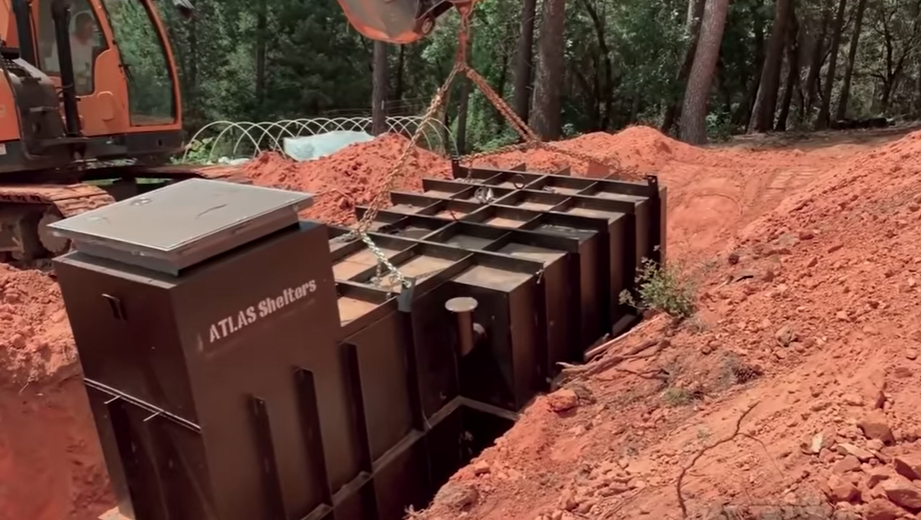
Atlas Survival SheltersAtlas Survival Shelter is a small bunker. It costs around five thousand dollars as its base price. The nice feature of this shelter is its customizability based on client demand. Installation is easy and you can lower the cost as long as you discuss them with the manufacturer.
You can install this in your backyard. It comes with an electricity system, usually solar power. It indeed provides individuals with their desired comfort since it comes with a waste disposal system, which is very essential.
This bunker can make people survive for more than three months without resupplying. However, if you prefer to reconstruct the shelter for a longer stay, you can do so. Remember that it can sustain your immediate family, but the space will not permit you to welcome the whole neighborhood.
Why Do Survival Underground Bunkers Cost A Lot?
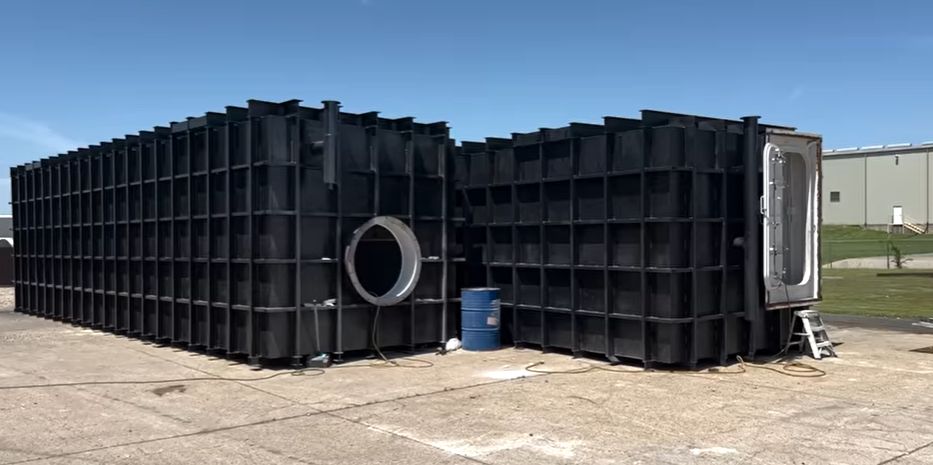
Atlas Survival Shelters
The pandemic becomes the catalyst for survival bunkers to sell like hot buns from a famous bakery store. Before, buying bunkers usually are just for preppers, survivalists, and doomsayers. However, there are now underground bunker manufacturers that cannot keep up with the market demand right on the onset of the pandemic.
In general, the most basic bunkers cost $50,000. This is the price of the bunker alone, separate from the labor fee for installation. If you want to add some customization and home features like a movie theater or swimming pool, then you might spend around $4.5 million.
You can also request the manufacturer to add some essential features. It can be secret passages, escape tunnels or hidden doors. It depends on you. There is a specific model that has this feature which cost around $500,000. It already includes three bedrooms, two bathrooms, a kitchen, a dining room, and a game room— basically, everything you need for a place to call your home.
Another variable that makes bunkers super costly is the life support systems. The system includes styrofoams, concrete, doors, guns, and ammunition. The excavation company alone costs a lot.
Why Do People Invest In A Backyard Bunker?
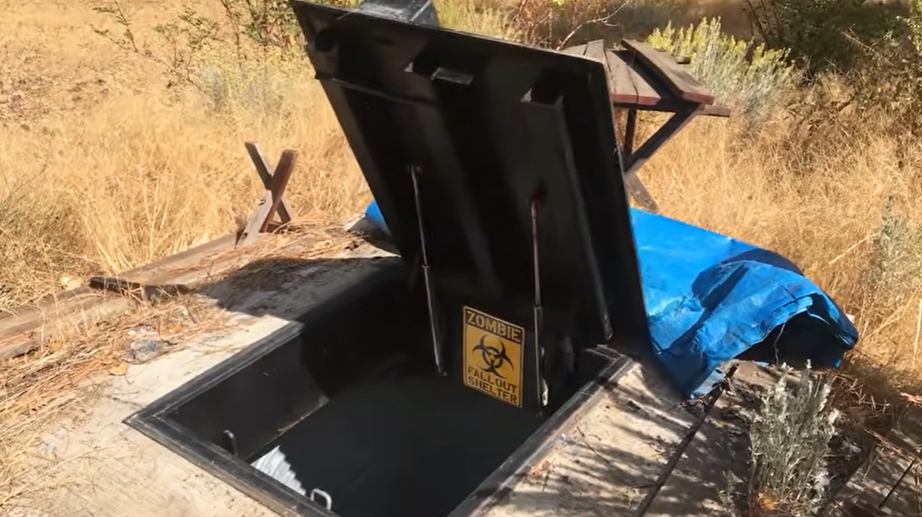
Atlas Survival SheltersYou might now be thinking why people are willing to spend this immense amount of cash on something they seldom will use or worst never. Why does the survival shelter business boom today? No matter how prepared you get for a specific disaster, your food and water will go to waste without a shelter to protect you.
As a result, the demand for an underground escape goes high setting aside the dangers of pandemics and politics. Then, our basic Economics principle comes in: the higher the demand, the lesser the supply, the more expensive a product gets. People, especially in America are starting to grow anxious about the possibility of war or calamity.
By 2021, the sales of storm shelters and bunkers reach a 30% increase as an additional for the 2020s 35% increase. Some manufacturers even have backlogs in their orders despite the raw material’s 20% increase.
The surge in demand was perceived to sprung forth from the uncertainty, anxiety, and fear that the pandemic brought to the people. Several SHTF events like the Covid-19 pandemic and threats of a possible nuclear war are uncontrollable. Thus, people use devices in some way to take control of their lives and, most significantly, protect their loved ones.
History of Underground Shelter
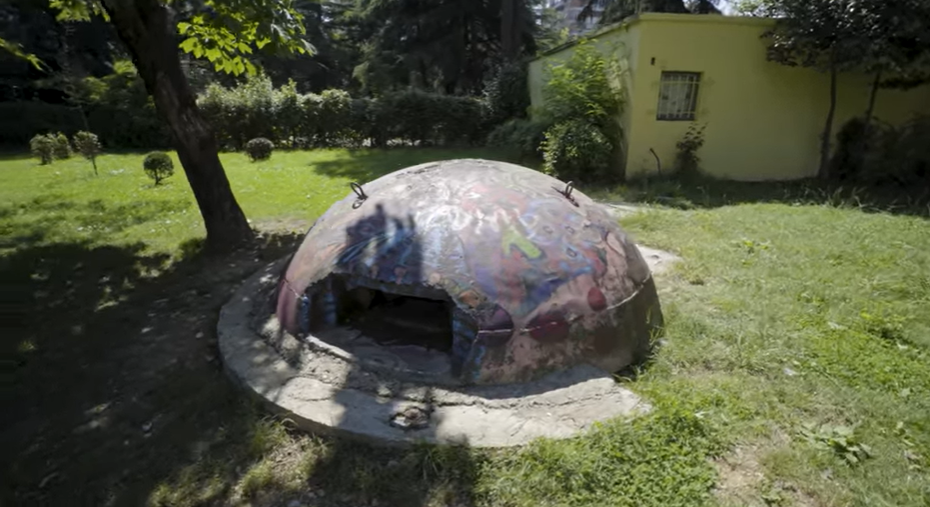
Rare EarthBunkers are previously known as fallout shelters way back 1970s and 1960s when the Cold War was at its peak. People ensure that these shelters can protect them from radiation. Thus, they use steel as their primary component.
In Albania, Enver Hoxha, their leader, built ten thousand bunkers during the Cold War during his regime. He was scared of invasion during that time even after his government crumbles these bunkers are still standing sturdy.
During WW2, amid the chaos, there found endless strategic planning. And building an underground hideout was not an exception. There are several underground bunkers in the United Kingdom that the nation’s future relied previously upon.
As we can observe, weapon facilities, bunkers, command, and control centers were all employed extensively during World War I, World War II, and the Cold War.
What Is A Prefabricated Bunker?
The most cost-effective option for creating a personalized underground bunker is prefabricated bunkers. Although specialists will still be needed for the excavation and building of the bunker, purchasing a kit will save you time and money.
The most affordable survival bunker kits will cost as little as $20,000, including delivery. These will include only the minimal necessities to get your bunker up and running quickly.
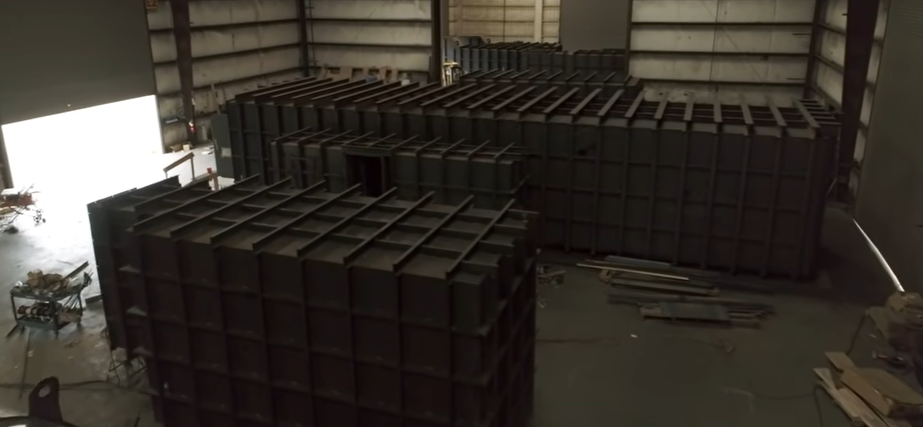
Kirsten DirksenExpect neither a fancy toilet nor a kitchen.
Bunker packages with a kitchen, full bathroom, indoor aquaponics gardens, living and leisure spaces, and other amenities will start at $250,000. Even though a prefab luxury bunker kit costs $250,000, it is still much less than a $1.5 million survival apartment.
Key Takeaways
With the current challenges happening in the world, you could never go wrong if you prioritize your safety and your family’s. Bunkers are one of the ways to do this. As the dangers become more unpredictable, can SHTF bunkers be the new normal?
You can also monitor your underground bunker from time to time when you build them close to your house. You can never control curious neighbors from checking. Refilling necessities will also be convenient. And, it will be more efficient to go home when every thing calms down.
Lastly, think about it thoroughly. Decisions like this one should not be done in haste. Bunkers should be sturdy, sustainable, comfortable and be built according to one’s needs. Therefore, rigorous planning is the first step to building your own bunker.
FAQs
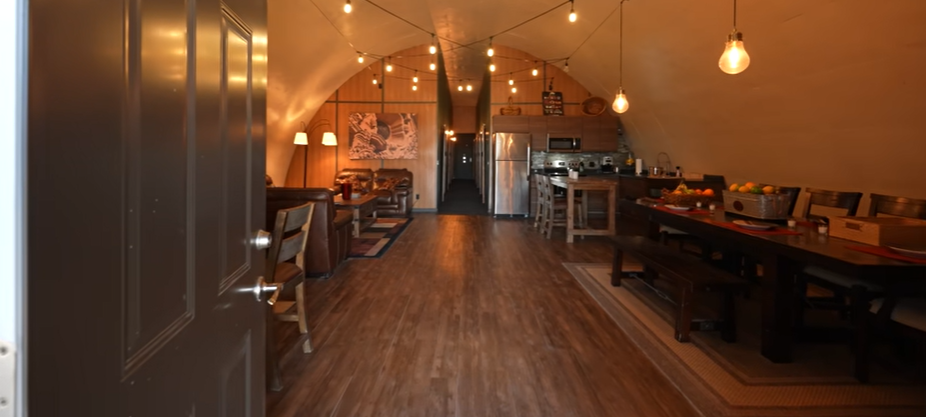
Enes YilmazerHow can I acquire clean water during scarce times inside the bunker?
When your water resource becomes scarce, you can do rainwater harvesting. To ensure that the water is safe to consume or use you can boil or filter it. Also, it is better that you have water purification tablets at your disposal.
What else will I need?
You have to have medicine and other supplements inside your bunker. Never forget to have your complete first aid survival kit, too. Stock up on pain killers, disinfectants, bandages, and antibiotics too.
Are ammo and weapons necessary?
Yes, keeping a few firearms on hand is ideal, but don’t overdo it, otherwise your underground bunker will turn into a gigantic gun safe. Water, food, and medication may be more valuable in a survival situation. For your insurance, though, you must have some form of weapon.
The post Preppers Complete Guide: How to Build a Practical, Useful Bunker appeared first on GeekPrepper.
By: GeekPrepper
Title: Preppers Complete Guide: How to Build a Practical, Useful Bunker
Sourced From: geekprepper.com/how-to-build-a-bunker/
Published Date: Tue, 10 May 2022 17:05:50 +0000
-------------------------------------------------------------------------
 CampingSurvivalistHuntingFishingExploringHikingPrivacy PolicyTerms And Conditions
CampingSurvivalistHuntingFishingExploringHikingPrivacy PolicyTerms And Conditions
